Blogs by Information Professionals and Para-Professionals at any level.
Are you on Facebook? Do you know of all of the library Facebook Groups that you can join and instantly connect with hundreds, in some cases thousands (and in one particular group over 10,000) other librarians?
No? Well, have no fear! The 5 Minute Librarian has compiled some of the top groups in many different areas of public librarianship. This list is no where complete (it is really hard to find these groups without knowing someone who is in them), so please post in the comments any additional groups to be included on this list!
Also note no regional groups have been included since they would only apply to a small number of readers, but local groups are out there! Look up your colleagues and see what groups they are part of – that may be the easiest way to find them.
ALA Graphic Novels & Comics in Libraries MIG
https://www.facebook.com/groups/284091538417404/
American Library Association’s Group dedicated to Graphic Novels & Comic Books! Also find us on ALA Connect: http://connect.ala.org/graphicnovels
403 members
ALA San Francisco 2015 ALATT Chapter
https://www.facebook.com/groups/660268200730240/
A fun back-channel for ALA San Fran 2015. Positivity-only zone. All librarians welcome. #mih #makeithappen #alatt15 2015 Annual Conference, San Francisco, CA: June 25-30, 2015
255 members
ALA Think Tank
https://www.facebook.com/groups/ALAthinkTANK/
Librarians! Social media’s space for them! We #makeithappen and #partyhard TOGETHER! We>MeDISCLAIMER: WHILE we love the American Library Association, we are IN NO WAY affiliated with them. ALA, in our case, stands for “Awesome Librarians Associated” because everyone here is awesome. You do NOT need to be an American Library Association member to be here. You don’t even need to be American!
11,186 members
Business Librarians
https://www.facebook.com/groups/buslib/
This group is dedicated to informing librarians with reference and research specialties in all aspects of business and finance of new developments and trends in business librarianship. We welcome business librarians (academic, public, corporate, etc), adjunct members like vendors of business-related research materials, and librarians of all sorts who just want to learn a little more about business research.
150 members
eLearning in Libraries
https://www.facebook.com/groups/459190367552515/
This is a group for anyone who is interested in developing e-learning for library purposes. We will share ideas and engage in discussion about e-learning. Public, academic, school, and special library staff are all encouraged to join. E-learning can include screencasts, tutorials, videos, and any other training delivered in an online format, and may be for library staff or patrons.
113 members
IFLA – LSN, Library Services to People with Special Needs
https://www.facebook.com/groups/ifla.lsn/
The Section for Library Services to People with Special Needs provides an international forum for the discussion of ideas, sharing of experiences and development of tools designed to promote and improve the effectiveness of library and information services to special needs groups, and the promotion of national and international cooperation at all levels.
831 members
League of Librarian Gamers – for Librarians who Play
https://www.facebook.com/groups/MTGLibrarians
A group for librarians who play games of all kinds – board games, card games, RPGs, video games, tabletop games, Magic: the Gathering, miniatures, dice games, classic games. If you’re a Librarian, and you play games, join this group!
370 members
Librarians in the Northwest
https://www.facebook.com/groups/LibrariansNW/
A virtual meeting ground for librarians and library professionals in the Pacific Northwest interested in talking about how to #makeithappen in their library spaces.
670 members
Libraries & Information Technology: Making FarmVille Work Better
https://www.facebook.com/groups/1411955635742429/
A place for those who work in public & academic library IT departments to network & share advice. This is a closed group, so feel free to be candid.
114 members
Libraries & Social Media
https://www.facebook.com/groups/LibrarySocial/
This is a group for anyone working professionally in social media for their library, or those curious about what it’s like.
2,746 members
Library Coffee Shop Talk
https://www.facebook.com/groups/188470881170938/
Enjoy your hot beverage and enjoy a light virtual conversation with other library minded folks.
144 members
Library Employee Support Network
https://www.facebook.com/groups/toxic.libraries
A place where librarians can gather and talk about abusive workplaces anonymously and safely and also get support and advice from colleagues. Email LESN.share and admin will post your comments anonymously. *OR* You can post from our anonymous Facebook account (ask one of the admins for the password).
462 members
Library Entrepreneurship & Maker Services
https://www.facebook.com/groups/startup.library/
More and more, libraries are becoming places of active, connected learning. We have also stepped up to the plate to help the jobless and career-changers in our communities rejoin the workforce. This group is where we will be discussing new ways that libraries can support makers, job hunters, the business-curious, freelancers, career changers, builders, startups, entrepreneurs, and existing businesses. Let’s make business and maker support as visible as storytime. Library Entrepreneurship & Maker Services is an official Member Interest Group of the American Library Association:http://www.ala.org/groups/mcoms/migs Visual resources are being collected here:http://www.pinterest.com/libent/
552 members
Library Related People
https://www.facebook.com/groups/libraryrelatedpeeps/
This is a Facebook group that welcomes all library related people. If you work in any library related capacity, intend to do so, or are plain interested we want you!
2,667 members
LibraryAware Lab
https://www.facebook.com/groups/lalab/
Let’s talk and share the library advocacy and marketing challenges and successes. Here we can ask each other questions and get a little more information so we can get to better solutions. LibraryAware Lab is a place to discuss, share, collaborate, and learn about what works and what doesn’t work.
588 members
MakerSpaces and the Participatory Library
https://www.facebook.com/groups/librarymaker
An open space for collaboration and sharing about MakerSpaces, digital media labs, and participatory/community spaces in libraries. Let’s share ideas, failures, successes, and resources!
2,422 members
Massachusetts Library Association Fans
https://www.facebook.com/groups/masslib
Connect with members of the Massachusetts Library Association. Cheer library successes and innovations. Advocate for adequate funding for libraries.
549 members
Museums + Libraries
https://www.facebook.com/groups/878024828888385/
A forum for library & museum professionals to exchange ideas & be all up in each other’s business. John Cotton Dana is our mascot. Cross-pollination is our jam.
138 members
Outside the Lines
https://www.facebook.com/groups/getoutsidethelines/
Outside the Lines is a weeklong celebration – Sept. 13-19, 2015 – demonstrating the creativity and innovation happening in libraries. Participating in Outside the Lines? This is a place to share ideas for events, campaigns and guerrilla marketing tactics for this fall’s celebration of libraries. Inspiration, suggestions and questions welcome! Find out more at http://getoutsidethelines.org/
411 members
Paging America: Advocate for Your Public Library!
https://www.facebook.com/groups/113676302125880/
How do you support your public library? Let us count the ways! Share your advocacy tips, tools and genius ideas with library advocates and patrons around the world.
119 members
Programming Librarian Interest Group
https://www.facebook.com/groups/698178656926704
To bring together all types of librarians interested in public programming for their patrons. Programming is an intrinsically essential library service. The Programming Librarian Interest Group helps librarians advocate for programming at their own institutions, share program ideas and successful strategies, and provides a space for professional development by librarians who do programming officially and unofficially as part of their job duties. The group is also be a vehicle for ALA members to connect more dynamically with ALA’s Public Programming Office.
1,367 members
R-Squared Risktakers
https://www.facebook.com/groups/rsquaredconf/
The R-Squared Risktakers group is a place to share how you’ve put your ideas from #rsq12 into practice. Share risks, challenges, triumphs and creative ideas. Whether you were at the conference or just love disrupting conventions, this is a place for free exchange.
219 members
The Shareable Clique
https://www.facebook.com/groups/ShareableClique
A Facebook Group for libraries and book lovers to share their viral content that can be reshared on other Facebook accounts. What works well at your library that may work well at other libraries? Share your successes, increase your outreach, and help other libraries build their audiences!
127 members
Storytime Underground
https://www.facebook.com/groups/storytimeunderground/
Storytime Underground is a collective of youth services librarians and professionals who firmly believe literacy is not a luxury. Our mission is threefold: We support each other; we promote each other; and we train each other.
2750 members
Storytimes And More on the Go
https://www.facebook.com/groups/storytimesandmoreonthego/
A place for Children’s librarians and staff who conduct outreach to come together and share ideas. Outreach is and has become so much more than just storytime for many libraries. Reaching out into our communities and letting them know what’s available to them is such a valuable tool for all libraries. We are on Pinterest ~ http://pinterest.com/storytimesa/ ~ and on Twitter ~https://twitter.com/StorytimesToGo ~ Please follow us!
439 members
Technology Training and Libraries
https://www.facebook.com/groups/215892381802232/
A resource for technology training for staff and the public. This is a place where ideas and resources can be shared.
1,162 members
Teen Librarians
https://www.facebook.com/groups/618059348208569
921 members
Teen Services Underground
https://www.facebook.com/groups/407834692712782/
Our mission is to support, promote, advocate, and build a community space to highlight the importance of teen services in minding the gap. We know how hard teen services can be and we want to help!
345 members
Teen Think Tank
https://www.facebook.com/groups/192137410961794
328 members
Troublesome Catalogers and Magical Metadata Fairies
https://www.facebook.com/groups/161813927168408/
A place for catalogers, metadata librarians, and those who admire them. Grab your wands and raise some Hell. ;c)
1,234 members
WordPress and Librarians
https://www.facebook.com/groups/wordpress.librarians/
This group is for librarians using WordPress.
820 members
Special thanks to Patrick Sweeney, Laura Hollister, and Austin Stroud for their help in compiling this list!
Note: Member numbers are collected from 6 Feb 2015. Please check back later for any updates! Inactive groups will be removed yearly.
Remember — sharing is caring! If you join a new group due to this list, please tweet, email, or post about this blog post. It’ll warm my little librarian heart that the hours I spent on this list were indeed helpful!
Here are just some software that you can use in your libraries.
SpiceWorks IT Helpdesk – Spiceworks is free network management software and help desk software designed for networks with up to 1,000 devices. It combines help desk software, network inventory, network monitoring, IT reporting, network configuration management, built-in TFTP server, a Community user-generated IT knowledge base, request for quote feature, ink and toner replenishment purchasing, SNMP v3 management, Active Directory management, bandwidth monitoring, UPS power management software, help ticket merging, multi-threading, Green IT support, SQL server monitoring, warranty renewal tracking, and IT community Q&A into one easy-to-use application. –CNET
OneDrive or Google Drive – They are good for online storage and collaboration between staff and other stakeholders. OneDrive is preferred because a personal user get 15gb of storage that can be upgraded or for companies with the Microsoft service (like Office 365) benefits from unlimited storage. The disadvantage with Google Drive is that you get 15gb that is shared between the various apps such as gmail and google+.
OneNote – This program organizes project information, but it takes time to master its many functions. The tabbed interface is intuitive with a mix of information panels and note-entry areas. Readability is good with full control of screen color and fonts. The program takes input in many forms such as documents, onscreen handwritten notes, and media files. Microsoft OneNote’s outline and search functions collate and outline the project data – CNET. This software works across platforms and is available on your tablet, phone, computer and on the web. All entries made using OneNote is sync to you Microsoft account; If you lose your phone, tablet or laptop, your information is not lost with it.
LimeSurvey – an open-source survey application, lists a number of features, including csv import/export and basic statistical analysis.
Greenstone – a suite of software for building and distributing digital library collections. It provides a new way of organizing information and publishing it on the Internet or on CD-ROM. Greenstone is produced by the New Zealand Digital Library Project at the University of Waikato, and developed and distributed in cooperation with UNESCO and the Human Info NGO. It is open-source, multilingual software, issued under the terms of the GNU General Public License.
Moodle – a Course Management System (CMS), also known as a Learning Management System (LMS) or a Virtual Learning Environment (VLE). It is a Free web application that educators can use to create effective online learning sites.
Invenio – a free software suite enabling you to run your own digital library or document repository on the web. The technology offered by the software covers all aspects of digital library management from document ingestion through classification, indexing, and curation to dissemination. Invenio complies with standards such as the Open Archives Initiative metadata harvesting protocol (OAI-PMH) and uses MARC 21 as its underlying bibliographic format. The flexibility and performance of Invenio make it a comprehensive solution for management of document repositories of moderate to large sizes (several millions of records).
HTTPS Everywhere — extension for the Firefox, Chrome, and Safari web browsers that enforces the use of HTTPS when using web sites that support it. For example, if a patron uses a library computer to access their bank, HTTPS Everywhere can reduce the chance that another user could sniff that patron’s password.
GIMP– Gimp is a powerful image editing software and is a free alternative to Adobe Photoshop.
INKSCAPE – Inkscape is a free multiplatform vector drawing software and is widely used by graphic designers for custom logo designs or vector drawings. Inkscape is a free alternative to Adobe Illustrator.
XMIND – With Xmind you can create your own flow charts, and organization charts. Useful for your everyday meetings.
OpenOffice – OpenOffice is a free alternative to Microsoft Office suite. The powerful all-in-one software enables you to create and edit your documents.
LibreOffice – LibreOffice is a productivity suite for Windows, Macintosh and GNU/Linux. It is a free alternative to the Microsoft Office Suite providing document production and data processing.
You can find more resources, technology and otherwise @ Concierge Librarian






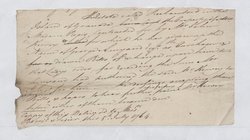
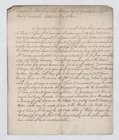




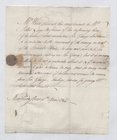















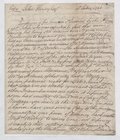




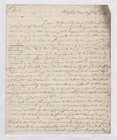





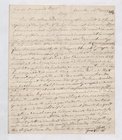

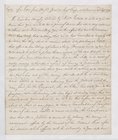
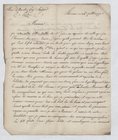


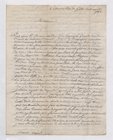

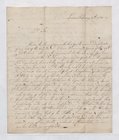

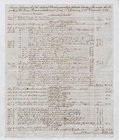


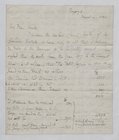
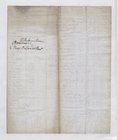
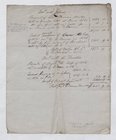



















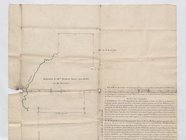








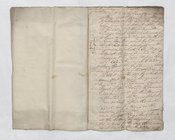







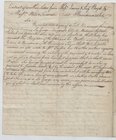









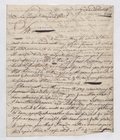
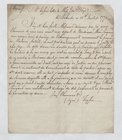


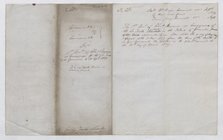


 517 Images
517 Images



















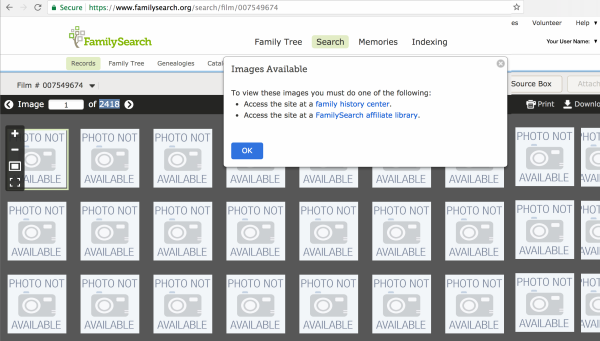



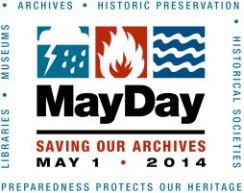
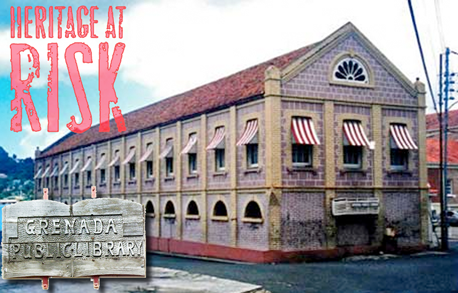
 Grenada’s current head librarian and director of library services, Samaria Lillian Sylvester (
Grenada’s current head librarian and director of library services, Samaria Lillian Sylvester (


